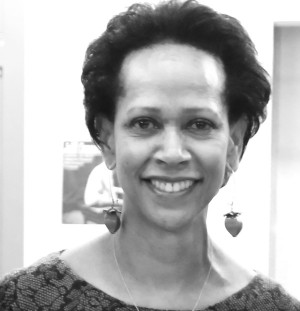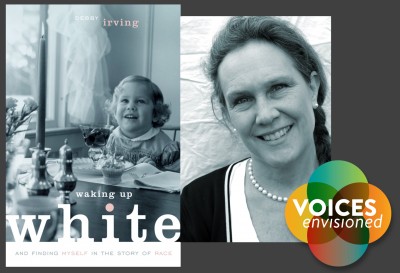On the Origins of Voices Envisioned & a Conversation with Debby Irving.
Join us on Tuesday, May 17 at 7pm as Oakwood welcomes Debby Irving to Voices Envisioned
Ten years ago, we began to imagine an effective way to connect Oakwood students, their families, and our faculty/staff/administrators, so that together, we could explore important issues related to diversity, equity, inclusion, and social justice. We wanted to do this in a way that was engaging and interactive, educational and entertaining. We knew there were amazing and accessible leaders of thought—authors, artists, activists, educators, and practitioners—who could help raise awareness and elevate dialogue around issues of twenty-first century diversity, equity, inclusion and social justice, and most importantly, help us examine and articulate the ways in which we discuss and address these issues on our campuses. Collaborating with the Parent Organization Diversity Equity and Inclusion Committee (PODEI), we came up with the idea for the Voices Envisioned (VE) program.
Throughout the years, the series has featured presentations and appearances from a broad range of guests, reflecting how inclusively we define diversity at Oakwood. The series launched with a performance of the critically acclaimed race play Nigga Wetback Chink. Our screenings have included the Academy Award winning, Visas and Virtue, a narrative short film inspired by the true story of Holocaust rescuer, Chiune “Sempo” Sugihara, who is known as “The Japanese Schindler,” as well as Read Me Differently, an acclaimed documentary that explores how dyslexia and ADHD have affected the filmmaker’s family.
Our guest speakers and workshop facilitators have included Father Greg Boyle, a Jesuit Priest and the founder of Homeboy Industries, a non-profit that has done breakthrough work transforming the lives of former gang members. Audience members were rapt by the moving talk given by Father Greg and two ex-gang members who shared their stories. We were reminded of the innate kinship that connects us to one another and the capacity we all have to make important life changes. Tim Wise, a prolific and popular anti-racism activist and writer, who has given speeches at over 600 college campuses across the U.S., has also been a featured VE guest. Wise has been described as “one of the most brilliant, articulate and courageous critics of white privilege in the nation.” Tim’s provocative observations and comments were truly eye opening for the packed room here at Oakwood. Another remarkably memorable VE guest was Ambassador Shabazz, the eldest daughter of Dr. Betty Shabazz and Malcolm X. She presented a heartwarming talk, sharing stories about her father that gave us insights into Malcolm X’s life away from the podium and public.



